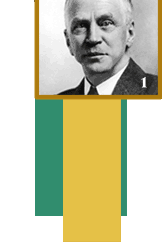|

Above: (1) Colonel Oliver
Mowat Biggar became the first Chief Electoral Officer of Canada in
1920. It was the first time that Parliament appointed an independent
officer to oversee elections.
(2) In a political cartoon from 1873, Prime Minister John A. Macdonald
candidly states " I admit I took the money, and bribed the electors
with it. Is there anything wrong about that? ". Though not necessarily
to be taken literally, it does make a valid point by underlining the
lack of ethics in politics.
(3) At Confederation, the responsibility for assembling and reporting
election results belonged to the Clerk of the Crown in Chancery. Édouard
J. Langevin held the position from 1865 to 1873. |
|
 |
 |
1920
– Introducing Modern Principles of Electoral Administration
Before
Confederation and even after, it
was not rare to find candidates attempting to buy off, intimidate
or otherwise influence voters. The governing party could also
get a head start by locating polls where it was likely to receive
the most votes, and by arranging electoral boundaries to translate
its votes into as many seats as possible.
A new era began in 1920 when Parliament
adopted the Dominion Elections Act. This Act introduced the principle
of universal voting rights – though many exceptions remained until the 1960s
– and a revamped electoral system that protected voters from undue influence.
A key measure was the creation of the position of Chief Electoral Officer, an
independent officer of Parliament mandated by legislation to oversee federal
electoral administration.
|
      
|



|

